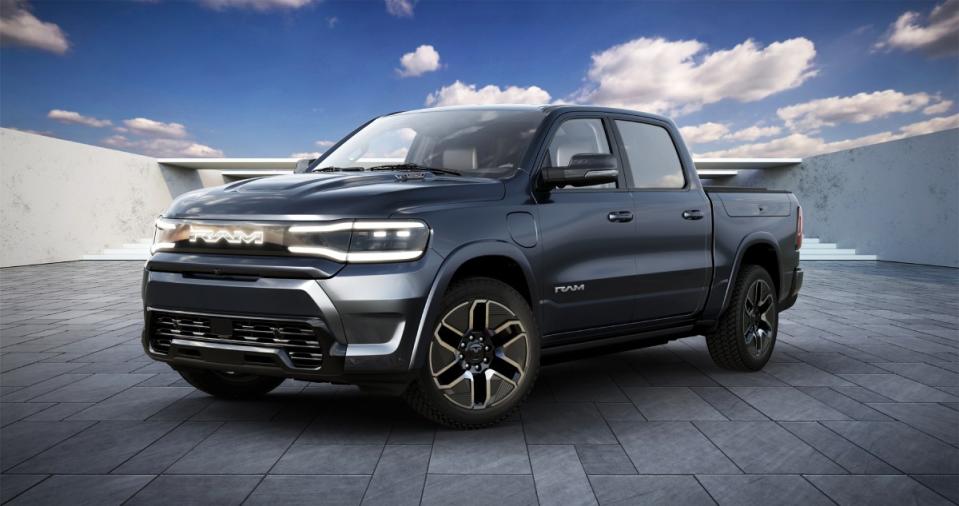Much was made of the fact that Tim Kuniskis cut his retirement to return to Stellantis as the CEO of Ram after Stellantis CEO Carlos Tavares’s abrupt departure.
One of Kuniskis’s initial actions was to delay the launch of the Ram 1500 REV electric vehicle (EV) until the 2026 model year. In its place will come the Ramcharger, with a 92-kwh battery pack coupled with a 3.6-liter V-6 engine acting as a range extender. Orders should open sometime in the first half of this year.
Related: Toyota’s $10B Woven City: From sci-fi dream to reality

According to a statement issued by Ram, the decision was driven by “overwhelming consumer interest, maintaining a competitive advantage in the technology, and slowing industry demand for half-ton BEV pickups.”
And, one could suppose that somewhere in Japan, Akio Toyoda, Chairman of the Board of Directors at Toyota Motor Corporation, shook his head and smiled upon hearing the news. Despite the criticism hurled at him by other automakers, his pronouncements on the future of electrification of automobiles had proven to be correct.
A future not realized – yet
Toyota has gained ground by prioritizing hybrids over battery electric vehicles, a decision that, in the past, drew widespread derision. To many, it seemed that Toyota, which had popularized gas-electric hybrids with the Prius, was living in the past, having invested and developed the technology over two decades. To them, EVs were a bullet train, and Toyoda was standing on the platform waiting for the next one to arrive.
Related: 2025 Ram HD reveals bold updates for the new year
Yet, as more EVs come to market, demand among mainstream buyers has waned. The EVs’ relative lack of range and the paucity of charging stations are deal-breakers. Even as the range has improved, buyers remain unconvinced. To make matters worse, they’re pricey.
The average transaction price for all vehicles was $49,740 last month, according to Cox Automotive. The average transaction price of EVs was $55,544. By contrast, the average listing price of a used car during that same period was $25,721.
EV demand is growing, but not quickly
The numbers tell the story.
EVs accounted for 1.2 million units sold in the U.S. market in 2024, nabbing 9.2% of new car sales, according to J.D. Power. That’s an increase of 0.8% over 2023. In contrast, J.D. Power reports that gasoline-electric hybrid sales captured 11% of the U.S. market in 2024, jumping 2.4% year-over-year.

No one was surprised more than automakers, as government laws are forcing car manufacturers to increase their EV sales to 50% by 2030 and eliminate gasoline-powered vehicles by 2035.
In response, automakers planned to leapfrog hybrids and go straight to BEVs in an effort to save billions of dollars in costs by not engineering and building hybrids. The hybrid’s short lifespan seemed to be dubiously profitable at best.
Related: Exclusive photos of the 2024 Rolls-Royce Spectre
But reality has intruded on the wishful thinking of governments and environmentalists. The simple fact is that most Americans aren’t embracing EVs.
As a result, automakers such as General Motors are becoming more cautious. While GM offers the Chevrolet Blazer and Equinox, as well as the Cadillac Lyriq, executives are slowing the rollout of further EVs. Buick’s first EV was expected to be on sale by now, and plans for other EVs have also been pushed back. GM is not alone, either, as Ford cut production of its Ford F-150 Lightning pickup last year, too.

A change in direction
The delays come as GM is rushing to bring plug-in hybrids to market by 2027, although published reports speculate that Chevrolet Silverado and GMC Sierra plug-in hybrid pickups could appear before then. The company already sells plug-in hybrid versions of the Buick GL8 and Chevrolet Equinox in China and has offered hybrids in the past, including the Cadillac CT6, although they haven’t proven successful.
Of course, Toyota offers hybrids across its lineup, while Honda offers hybrid renditions of the Honda Accord and CR-V. Hyundai and Kia seem best suited for fickle consumer preferences, as they offer an ever-growing selection of hybrids, plug-in hybrids, EVs, and non-electrified options.

Related: 2025 Ram 1500 Tungsten Review: An all-American deluxe truck
Even Ford, which has offered a Ford Escape Hybrid since 2005, now offers the F-150 and Maverick hybrids. Other automakers are scrambling to bring more hybrids to market, rushing to fulfill consumers’ sudden demand for hybrids over EVs.
But not all automakers were so hasty to rush into EVs. Consider supercar makers such as Lamborghini, which is transforming its lineup to consist entirely of hybrids, with electrification a more distant priority.
Final thoughts
And this is why Akio Toyoda is smiling.
As automakers rushed to design, engineer, and build EVs at a cost of billions of dollars, Toyoda stood alone in toting hybrids as an interim solution, one that would ease buyers’ transition from electrified automobiles. His company had spent billions of dollars over the past two decades perfecting the technology and wasn’t quick to shelve it for something unproven in the marketplace.

He also realized that most buyers aren’t ready to cast off the automotive technology they know how to deal with for one that they don’t, especially one that comes with a rarified price tag. It’s a huge risk for the second-largest purchase any consumer makes.
Akio Toyoda understood this, even as others didn’t. What most competitors once saw as crass salesmanship to move technology in which his company had a huge investment has now proven to be sage advice.
So, despite what some may desire, the all-EV future is coming – just as soon as he hoped.
Related: Joe Rogan’s new Tesla Model S Plaid pushes customization to the extreme
#turns #Akio #Toyoda












Leave a Reply